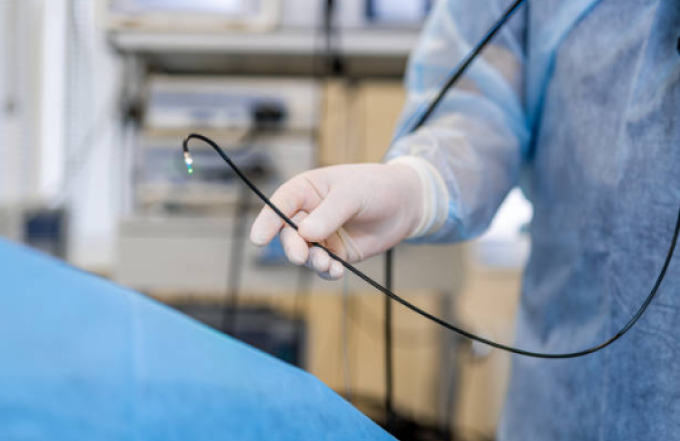Gastroscopy
Gastroscopy Procedure
A gastroscopy is a procedure performed to examine the upper part of the gut (the upper gastrointestinal tract). The upper gastrointestinal tract or gut consists of the oesophagus (gullet), the stomach and the small intestine (the first portion of the gut), also known as the duodenum.

Why is a Gastroscopy indicated?
A gastroscopy procedure is performed for diagnostic, therapeutic and interventional reasons. It is normally indicated for patients that are suffering from symptoms of a gastrointestinal condition such as:
- Nausea
- Swallowing difficulties
- Persistent stomachache
- Frequent vomiting
- Stomach ulcers
- Gastro-oesophageal reflux disease (GORD)
- Pains in the abdomen
- Recurring heartburn
What does a Gastroscopy entail?
A gastroscopy is performed using a thin tube that has a light and a camera attached to its end, which will present images on a screen to allow the surgeon to get a view of the oesophagus, stomach and small intestine. This tube is called an endoscope.
A numbing spray will be sprayed to the throat, and intravenous sedation will be given. The surgeon will insert the endoscope into the throat, passing through the oesophagus, stomach and upper part of the small intestine. Air will be inflated through the endoscope into the digestive tract to get a better visual of the lining and surrounding tissues.
FAQ
Are there any potential risks and complications of a gastroscopy?
The risks and complications during this procedure are rare; however, problems such as bleeding and perforation of the intestinal organs may be experienced.
What can be expected after a gastroscopy?
The patient’s throat may feel sore, and they may also experience some cramping pain or bloating due to the inflated air in the stomach during the procedure.
Can a patient undergo a gastroscopy procedure if they are taking blood-thinning agents?
Yes, they can; however, it is important that you notify the doctor prior to the procedure.

Gastroscopy Procedure
A gastroscopy is a procedure performed to examine the upper part of the gut (the upper gastrointestinal tract). The upper gastrointestinal tract or gut consists of the oesophagus (gullet), the stomach and the small intestine (the first portion of the gut), also known as the duodenum.
Why is a Gastroscopy indicated?
A gastroscopy procedure is performed for diagnostic, therapeutic and interventional reasons. It is normally indicated for patients that are suffering from symptoms of a gastrointestinal condition such as:
- Nausea
- Swallowing difficulties
- Persistent stomachache
- Frequent vomiting
- Stomach ulcers
- Gastro-oesophageal reflux disease (GORD)
- Pains in the abdomen
- Recurring heartburn
What does a Gastroscopy entail?
A gastroscopy is performed using a thin tube that has a light and a camera attached to its end, which will present images on a screen to allow the surgeon to get a view of the oesophagus, stomach and small intestine. This tube is called an endoscope.
A numbing spray will be sprayed to the throat, and intravenous sedation will be given. The surgeon will insert the endoscope into the throat, passing through the oesophagus, stomach and upper part of the small intestine. Air will be inflated through the endoscope into the digestive tract to get a better visual of the lining and surrounding tissues.
FAQ
Are there any potential risks and complications of a gastroscopy?
The risks and complications during this procedure are rare; however, problems such as bleeding and perforation of the intestinal organs may be experienced.
What can be expected after a gastroscopy?
The patient’s throat may feel sore, and they may also experience some cramping pain or bloating due to the inflated air in the stomach during the procedure.
Can a patient undergo a gastroscopy procedure if they are taking blood-thinning agents?
Yes, they can; however, it is important that you notify the doctor prior to the procedure.








